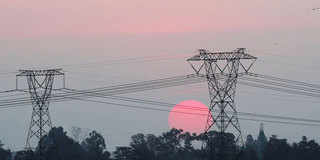How disruptive is distributed generation?

Utilities and independent power producers are preparing for the coming storm — distributed generation (DG). As more rooftops deploy solar, more wind energy goes online and more small-scale combined heat and power (CHP) plants are commissioned, existing power plants are being forced to reconsider their role as part of the larger electrical system. Some are looking at the fast-ramp market, while others are considering ways to supplement revenue through additional services, such as synchronous condensing to remain profitable. The impact of DG was the biggest takeaway at the bi-annual Combustion Turbine Operations Technical Forum (CTOTF) that took place last month in St. Augustine, Florida. Gas turbine operators from across the U.S. were briefed on a variety of topics, as well.
The big theme this year was preparing for the coming storm due to disruptive technologies, in particular DG. And who better to talk about grid pattern changes than an independent system operator (ISO). Tag B. Short, Interim Director, South Region Operations, Midcontinent Independent System Operator (MISO), detailed the big shifts affecting his region’s 180,000 MWs of capacity, 1,600 generating units and 66,000 miles of transmission. MISO is a diverse region with natural gas comprising 38%, coal 41%, nuclear 8%, wind 8% and others 5%. MISO North/Central accounts for 133,000 MW of installed capacity where coal dominates at 48% with gas trailing at 28%. However, in MISO South (47,000 MW), gas is king at 67% with coal at 19%. Short outlined many factors influencing power plants today, including environmental and energy policy, wind, solar, DG, fuel supply shifts, power pricing dynamics, infrastructure investment requirements and industry consolidation.
The number of U.S investor-owned utilities has decreased from 100 in 1994 to 47 in 2014. “We anticipate the retirement of 10,000 to 12,000 MW of coal in MISO,” said Short. “But these coal plants already have all the transmission lines and natural gas supplies coming in so where better to positon another plant?” The problem is that it takes four or five years from a coal plant’s retirement to decommission it and replace it with a combined cycle plant on the same site.
In the interim, MISO is seeing decreasing supply resources compared to the past. If facilities could be built and brought onto the grid faster, some of the pain from coal decommissioning could be eased, he said. Meanwhile, gas-fired generation is growing steadily in MISO, particularly in MISO South. From just 6% of electrical generation (MWH) in 2011, natural gas accounted for 23% of all generation by 2015. Part of the increase was due to the addition of MISO South into the overall regional total two years ago. But since that point, total gas MWH has jumped by 6% in MISO. “2015 significantly eclipsed prior gas utilization,” said Short. “We have seen increases of 35% since 2014 (70% for MISO North/Central) due to supportive gas pricing and changes in fleet composition.” At the same time, MISO has also seen the rapid rise of MW provided by wind farms. From 1,112 MW in 2006, wind now exceeds 15,000 MW, or 9% of total generation in the region for the year. Current projections envision three times that amount of wind on the grid by 2030. “Wind production can fall off just as load is rapidly increasing in early winter mornings,” said Short. “In the future, MISO expects the challenges of intermittent renewables will be amplified, requiring more flexible gas-fired generation.”
Fuel Flexibility in Heavy-Duty Gas Turbines: A Key Driver for Energy Transition
March 13th 2025From Hydrogen to HVO, Mr. Federico Bonzani, Chief Technology Officer of Ansaldo Energia, describes the fuel flexibility state-of-the-art solutions of the Company to meet the actual and future needs of power generation industry.